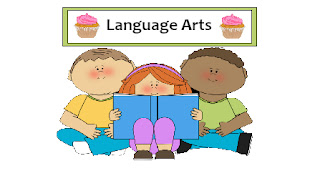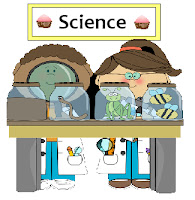(November 26 - November 30)
In Social Studies we will describe and compare holidays and traditions celebrated in our families, country and other cultures.
(November 26 -November 30)
In Science we will be learning how the Earth is made of soil and rock. We will also be exploring characteristics of soil and rocks.
(November 26 - November 30)
In Math this week we will be focusing on measuring the area of space and two-dimensional figures in square units.
(November 26 - November 30)
In Language Arts this week we will make self to text connections, text to text connections, and text to world connections when reading stories. We will also make inferences about events and information in texts. We will continue to focus on the author's purpose of written stories and texts.
(November 12-November 16)
In Science we will be experimenting with magnets and identifying objects that are magnetic and those that are not.
(November 12- November 16)
In Social Studies this week we are identifying the difference between natural resources and man-made resources and describe the importance of natural resources in our everyday lives. We will also understand the history of the first Thanksgiving and how the holiday came about.
(November 12-November 16)
In Math this week we are ordering numbers from 1-50, as well as comparing and building numbers with manipulatives from 1-50.
(November 12- November 16)
This week we are continuing to understand the author's purpose of texts and stories. We will also be identifying the features of texts in non-fiction texts, fiction texts, newspapers and magazines.
(November 5- November 9)
In Science we are learning what motion is and how speed is influenced by motions such as push and pull. We are also learning the different ways things can move. Such in a zig zag motion, back and forth, up and down, round and round and a straight motion.
(November 5- November 9)
In Social Studies this week we will be identifying 10 of the 50 United States and locate them using a map. The 10 states students are expected to learn and identify are the following: California, Hawaii, Alaska, NewYork, Florida, Texas, Oklahoma, New Mexico, Louisiana, and, Arkansas.
(November 5 - November 9)
In Math this week we will be creating number combinations to the number 10 in order to recognize the relationship amongst numbers by creating several different number sentences to create one number. An example includes: 2+3=5, 1+4=5, 5+0=5 are all different number combinations to make five.
(November 5 - November 9)
In Language Arts this week we will make self to text connections, text to text connections, and text to world connections when reading stories. We will also make inferences about events and information in texts. We will continue to focus on the author's purpose of written stories and texts.
(October 29- Nov. 2)
In Science we are learning what motion is and how speed is influenced by motions such as push and pull. We are also learning the different ways things can move. Such in a zig zag motion, round and round and a straight motion.
(October 29-Nov. 2)
In Social Studies we are learning about what it means to vote, the importance of voting, and the election process of government leadership.
(October 29- Nov. 2)
In Math this week, we are learning about the relationship of numbers through Fact Families. An example of a fact family is:
2+3=5
3+2=5
5-2=3
5-3=2
(October 29-Nov. 2)

In Language Arts this week we will continue focusing on creating mental images when reading texts. Mental images are the pictures that you imagine as you read different texts.We will also comprehend the author's purpose for writing different texts.
For writing we will continue writing stories and practice the revising stage of the writing process. Students will also continue practicing writing complete sentences with a subject verb agreement.
(October 22-26)
In Science this week, we will be reviewing all the different types of energy and how they are important to us in our everyday lives. The three different types of energy that we have been focusing on, include light, heat, and sound.
(October 22-26)
In Social Studies this week, we are learning about some of the major landforms and bodies of water that make up our earth. Some landforms we will particularly focus on include: an island, hill, mountain, valley, and plain. The bodies of water that we will focus on, are oceans, a river, and a lake. Students will also become familiar with the names of the four oceans that make up the earth (Indian Ocean, Atlantic Ocean, Arctic Ocean and Pacific Ocean). (October 22-26)
In Math this week we will be utilizing the vocabulary "fewer and more" to understand the relationship of numbers. Some examples include: One fewer than 12 is 11, or one more than 12 is 13. Understanding the meaning of math vocabulary helps students succeed in all forms of mathematics learning, especially when given word problems.
(October 22-26)
In Language Arts this week we are focusing on creating mental images when reading texts. Mental images are the pictures that you imagine as you read different texts.We will also comprehend the author's purpose for writing different texts.
For writing we will be writing poems and creating stories using content vocabulary we have learned throughout Science, Social Studies and Math. As we continue to become great writers, we will be understand the importance of making complete sentences that have a subject and verb agreement.
(October 15-19)
(October 15-19)
(October 9-12)
(October 9-12)
(October 9-12)
 |
| In Math we will focus on patterns in numbers, such as the pattern when counting even numbers (ending in a 0, 2, 4, 6 or 8), odd numbers (ending in a 1, 3, 5, 7, or 9) by 5's and by 10's. |
(October 9-12)
In Language Arts we are focusing on the story elements from fiction texts and making connections from stories read independently, as well as from stories read aloud in whole group. When students are given opportunities to share connections in texts read, it truly keeps them engaged in what they are reading as they are able to relate to personal experiences.
Some of the story elements that the students are expected to identify and describe include:
- Setting
- Characters
- Beginning
- Middle
- End
- Problem
- Solution
Some connections students should be able to make in order to aid in comprehension inlcude the following:
Text to Self Connections (Read a book and relate events from the book to personal experiences)
Text to Text Connections (Read a book and relate events from the book to another story previously read)
Text to World Connections (Read a book and relate events from the story to world events and experiences)
























No comments:
Post a Comment